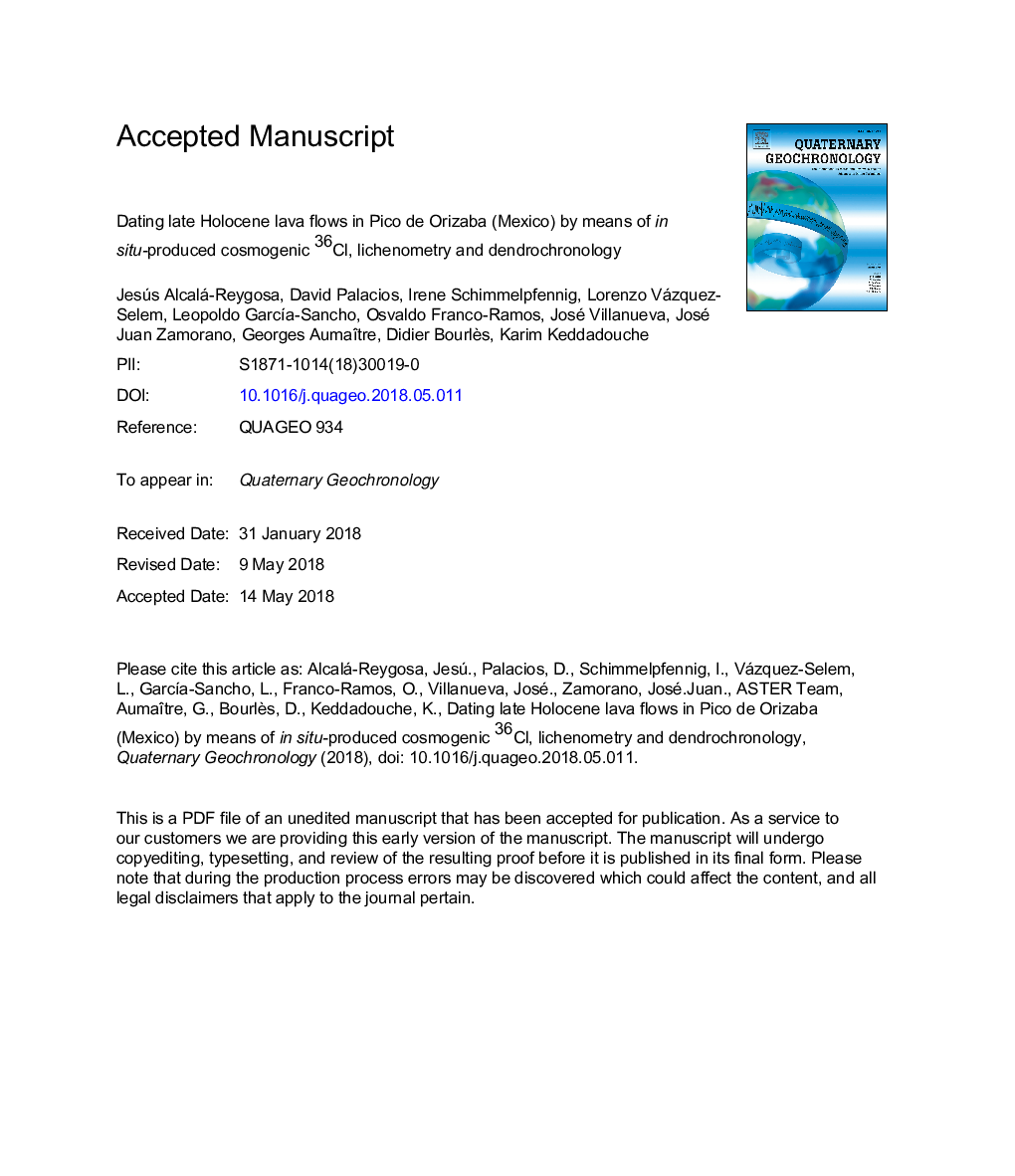| Article ID | Journal | Published Year | Pages | File Type |
|---|---|---|---|---|
| 8912801 | Quaternary Geochronology | 2018 | 39 Pages |
Abstract
The knowledge of the eruptive history of volcanic centers allows for improving the evaluation of the related risks and hazards in populated areas, but substantially depends on the ability of dating the lava flows. However, traditional methods such as U-Th/He, 40Ar-39Ar, 40K-40Ar and radiocarbon dating are not always suitable. Therefore, an alternative approach based on the combination of in situ-produced 36Cl based cosmic ray exposure dating, lichenometry and dendrochronology was tested on two lava flows (called Lava flow “A” and “B”) from Pico de Orizaba (Mexico), previously attributed to 16th and 17th century eruptions, respectively. The presented results show that both lava flows are significantly older than their assumed 16th and 17th century ages. Regarding lava flow “A”, the measured in situ-produced 36Cl concentrations lead to a mean age of 3.03â¯Â±â¯0.70 ka, while dendrochronology and lichenometry yield minimum ages of 834 and 1130 years, respectively. Regarding lava flow “B”, the measured in situ-produced 36Cl concentrations lead to a mean age of 1.45â¯Â±â¯0.35 ka, whereas lichenometry gives a minimum age of â¼1000 years. Overall, this demonstrates that the combination of in situ-produced 36Cl based cosmic ray exposure dating, lichenometry and dendrochronology has a considerable potential for dating purposes on young deposits and landforms, in particular on lava flows at high elevation sites.
Keywords
Related Topics
Physical Sciences and Engineering
Earth and Planetary Sciences
Geochemistry and Petrology
Authors
Jesús Alcalá-Reygosa, David Palacios, Irene Schimmelpfennig, Lorenzo Vázquez-Selem, Leopoldo GarcÃa-Sancho, Osvaldo Franco-Ramos, José Villanueva, José Juan Zamorano,
